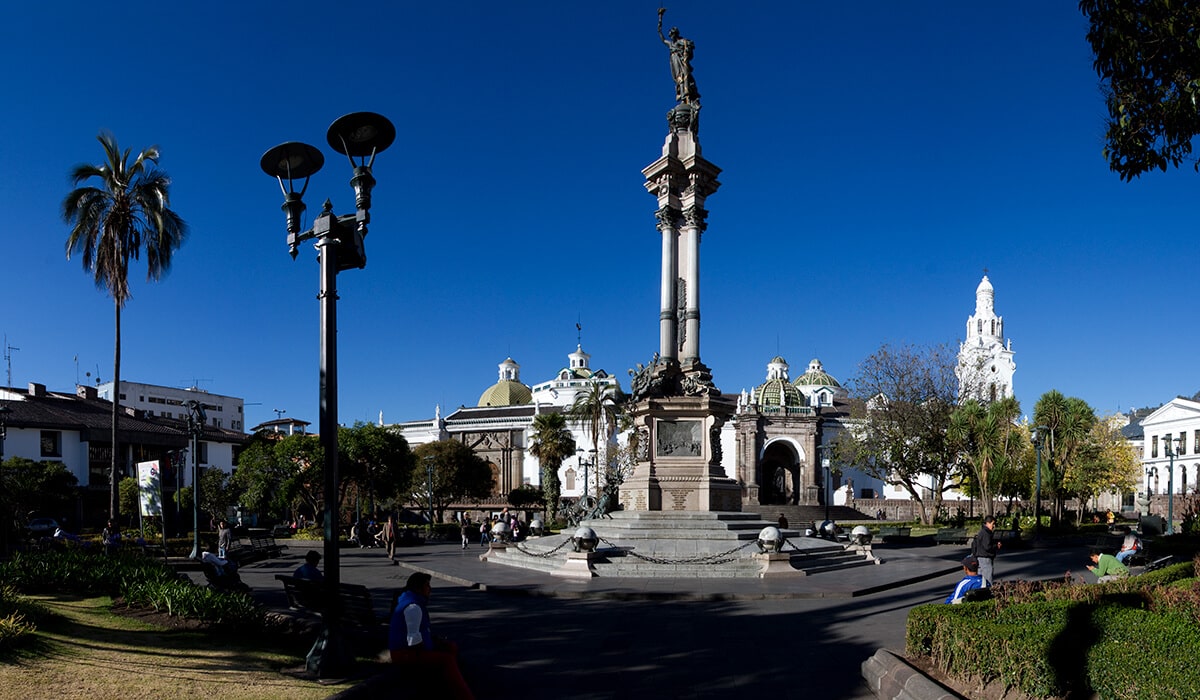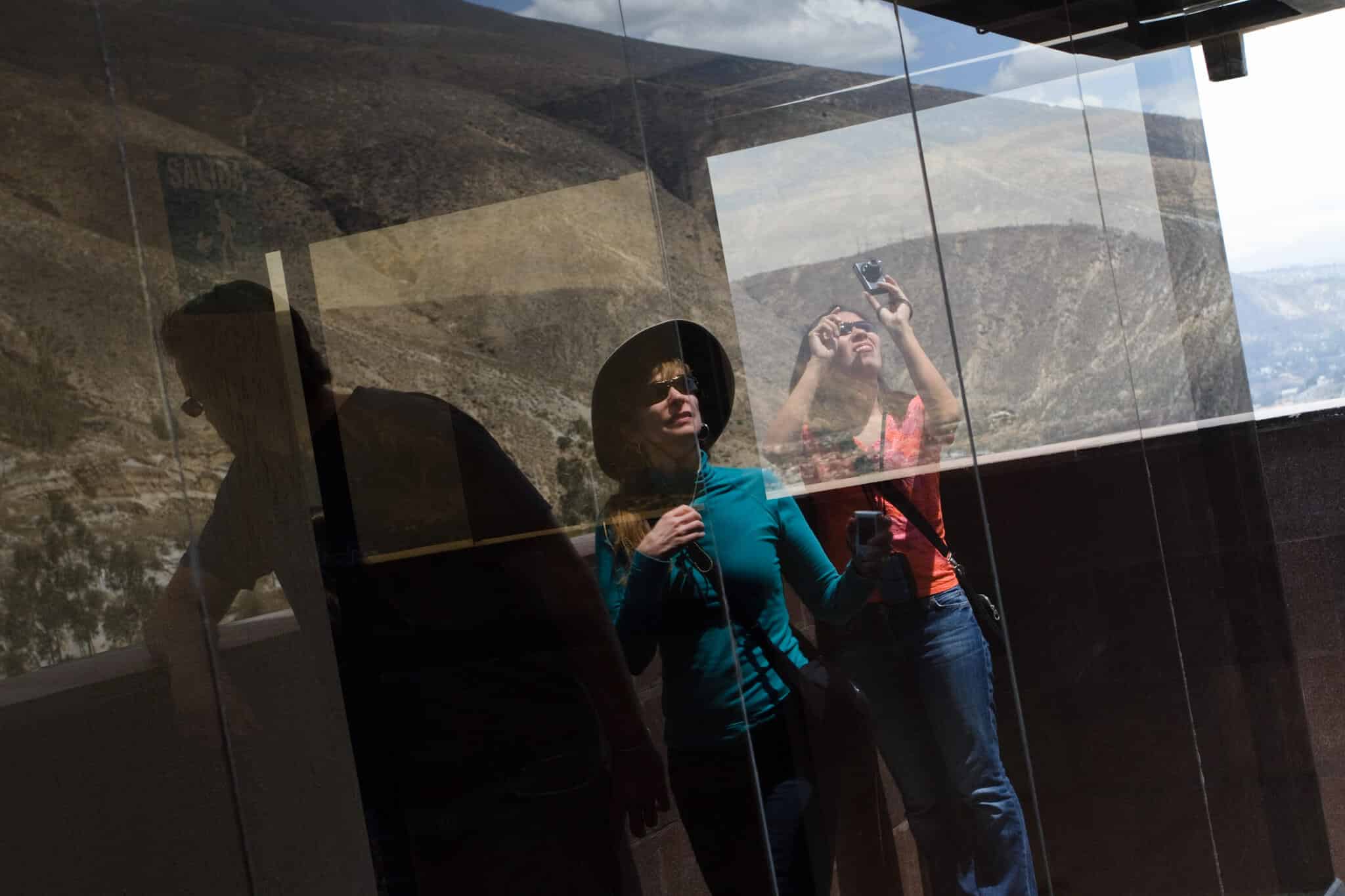If you typed Quito Ecuador weather into your search engine, you’ve come to the right place.
Weather can make or break a holiday so checking it in advance is a smart move. As opposed to the four seasons, you’ll find in the northern and southern hemispheres, there are really only two seasons in Quito and the Andes, in general: rainy season and dry season. That said, over the course of only one day, the weather in Quito might vary drastically; it’s all part of the adventure!

Average Weather in Quito
The weather in Quito is often described as a perennial spring. Throughout the year, this Andean city, its cool morning air and generally lush vegetation, resembles the final days of spring in countries where spring exists.
As is typical of spring weather, on any given day in Quito, don’t be surprised if you get sunburned in the morning while exploring Old Town only to get completely soaked in the afternoon!
The annual average temperature in Quito doesn’t vary that much. What might shift, however, is precipitation. Unless you arrive during a particularly dry spell or during peak rain months, you’ll find that the weather in Quito is easy to adjust to and won’t usually ruin day plans and activities.
The average day-time temperature in Quito is 22 Celsius (72 F) and the average night-time temperature is 9.5 Celsius (49 F).
Note that humidity is relatively low so, even on hot days, it doesn’t feel overwhelming as in more tropical locations.
The relatively arid climate is due to Quito’s altitude, which is 2,850 meters (9,350 feet) above sea level. However, the altitude is also the reason why rainstorms occur quite spontaneously, and also why UV radiation is high (more on that later in this text).
When is the rainy season in Quito?
Rainy season in Quito occurs at two times during the year: March/April and then between October and December.
The rainiest month tends to be April. In fact, Ecuadorians often use the phrase abril, aguas mil, which roughly translates to “April, a thousand showers”.
The driest months in Quito are June through September and then again between January and March. These months, especially from June to August, tend to be the windiest. The dry season is usually a good time to climb several of the nearby peaks, depending on their location.
Remember to carry rain protection with you at all times during the rainy season, but if you happen to forget one day, you’ll probably find a street vendor conveniently selling $2 umbrellas as soon as the first drops start to fall!

Best time of the year to visit Quito
There really is no wrong time to visit Quito. As mentioned earlier, the temperature doesn’t fluctuate very much and it’s usually sunny.
That said, to make the most of your days, try to avoid the rainiest months like April and October. In fact, the months just following these, like June and November/December tend to be quite lovely since everything is lush from the rains. There may still be a good probability of rain so if you prefer to play it safe, visit during the dry season.
If you’re escaping a long, dark winter, you’re guaranteed to get sunshine while in Quito. In fact, Quito probably has more days of sunshine than most destinations. If that’s what you’re looking for, consider visiting Quito between December and February.
Daylight in Quito
Since Quito is on the Equator, not only do we lose the four seasons experienced in other parts of the world, we also have consistent sunrise and sunset hours. Expect the sun to rise around 6:20 am and set at 6:30 pm every day throughout the year. This provides a consistent 12.5 hours of daylight all year long.
Keep in mind that the evenings in Quito are chilly due to the altitude and, as soon as the sun sets at 6:30 pm, you’ll need a warm sweater. This also has an effect on local nightlife, which is less active compared to places with warmer evening weather.

UV radiation in Quito
UV radiation in Quito deserves its own section of this blog! Most travelers to Ecuador don’t realize just how potent the sun is until it’s too late.
Ecuador, along with Perú and Colombia, receives some of the highest UV radiation ON EARTH. It’s really off the charts and over exposure can lead to severe sunburn, sunstroke and, especially over the long term, skin cancer. Yikes.
While some countries cancel school because of snow days, Quito schools have been known to cancel activities due to UV radiation! If you’re traveling with children, be mindful of how much time they’re spending in the direct sunlight.
As a general rule, avoid full exposure to the sun between the hours of 11 am to 3 pm and, during these hours, as well as sunny segments before and after, make sure to use a hat, sunglasses, and sunscreen.
Unfortunately, this is usually only taken seriously after the first sunburn so, assuming you get a little too much sun exposure during your first days in Quito, bring some aloe vera cream with you to alleviate the pain!

What to bring on your trip to Quito
For sun protection, make sure you bring:
- Sunscreen (at least SPF 50, depending on your skin tone)
- Hat
- Sunglasses
- Thin long-sleeved shirts
- Water
For rain and cooler temperatures, bring:
- Light rain jacket or umbrella
- Windbreaker
- Sweater for chilly nights or right after a downpour
Ecuador is a small, but diverse country and is made up of 4 regions: the Coast, Andes, Amazon, and the Galápagos Islands. The weather in this blog only covers Quito and you’ll find that temperature, humidity and season vary greatly between regions.
If you’re planning to visit another region of the country and would like to know more about its seasons and weather, shoot us a comment below and we’d be happy to help!



